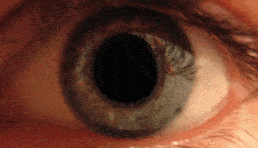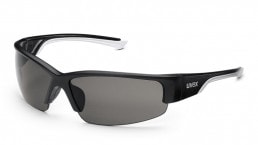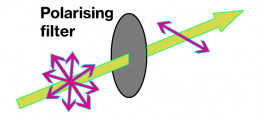Summer is here and that hopefully means lots of sunshine. This is proven to have a positive effect on our mood – but beware of the dangers. Sunlight is composed of powerful ultraviolet (UV) rays. This segment of the electromagnetic spectrum is imperceptible to humans and can cause long-term damage not only to our skin, but also the eye’s cornea and retina. What is the best way to protect ourselves against this invisible danger?
While it is common practice for sunbathers to protect their skin with sun lotion as they soak up some rays, the most important sensory organ – the eye – is often neglected. The consequences can be dire as the eyes are in fact 20 times more sensitive to UV rays than skin, so even a short spell in the sunshine without UV protection can be dangerous. An overdose of UV radiation can lead to conjunctival irritations, causing the eyes to redden and water. In the long term, this increases the risk of developing cataracts or other age-related damage of the retina (macular degeneration).
UV protection from the EXpert
The importance of UV protection at uvex is clearly reflected in the company name: uvex = Ultra Violet EXcluded. When choosing eyewear that is suitable for all manner of uses, it is important to check that the glasses feature a CE label. This is a guarantee that the fundamental safety requirements in accordance with European standards are being met. The personal eye protection norm EN 166 prescribes minimum UV protection up to a wavelength of 380 nanometres for safety eyewear. However, harmful light can reach up to 400 nanometres. For this reason, all uvex safety eyewear with polycarbonate lenses, whether clear or with a dark grey tint, offers the maximum possible protection from exposure to UV radiation for wearers: 100% UV 400 protection.
Glare protection ≠ UV protection
Sunglasses should ideally fulfil two functions: protect the eyes against harmful UV radiation and prevent glare in bright sunlight. It is a common misconception that the darker the lenses, the better the level of protection against damaging rays. The lens tinting is not an indication of the level of UV protection. Dark lenses without UV filters can actually be very dangerous as they offer just offer glare protection, absorbing visible light. This hampers the pupillary reflex, which is the eye’s natural protective mechanism, meaning that more UV radiation can in fact penetrate the eye.

The pupillary reflex of the human eye is a form of natural UV protection.
It is therefore important that eyewear has UV filters as well as the right tint, with the latter being determined by for what purpose the eyewear will be worn. For example, transmission is in the region of 53% for lens marking 5-1.7 (as assigned to light silver mirror lenses), providing light glare protection, making this especially suited to workplaces with some sunshine or changeable weather. With transmission of 23%, lens marking 5-2.5 (for example, grey lenses) is a good choice for Central European latitudes. Lens marking 5-3.1 (as featured in polavision lenses) offers higher glare protection, making it appropriate for more southern latitudes. All uvex tint options fulfil the requirements of the standard EN 172 – Sunglare filters for industrial use. They can consequently also be worn in traffic and for transport-related tasks, as they comply with requirements for signal light recognition.
uvex polavision: advanced sun protection

uvex polavision – modern safety eyewear with UV protection
Rather than traditional sunglasses, which reduce brightness through the lens tinting, it is advisable to have lenses with polarising filters when driving or in close proximity to lakes or the ocean. The grey tinting of these sunglasses also reduces light transmission so everything will appear less bright. In addition, different light and radiation wavelengths are absorbed by the integrated polarising filter. This greatly reduces distracting reflections from water surfaces such as lakes or of surfaces like a car windscreen, allowing for improved, more pleasant perception of the surroundings. The polarising filter only lets waves which oscillate in a certain direction pass and blocks other waves (see image). The polarising effect can be best explained by trying out the following easy experiments. Stand in front of a car windscreen. Sunlight that hits the windscreen is reflected and oscillates in all directions (see image). As the reflection is so great, it is hard to distinguish what is behind the windscreen. However, put on a pair of sunglasses with a polarising filter, such as uvex polavision, and notice how the contours of the seats behind the windscreen are much clearer. The filter reduces all irritating reflections to a minimum. A similar effect can also be observed when looking across a lake. Polarised safety eyewear provides a much clearer view “below” the surface of the water as the light reflections on the surface are also being filtered out.

In brief
It is extremely important to wear safety eyewear that includes sun protection in the bright summer months, as it effectively protects the eyes against harmful UV radiation, which tend to be particularly strong in summer. Vision is significantly safer and more pleasant with tinted lenses. Sunglasses with polarising filters also reduce disruptive reflections, which greatly enhances comfort.